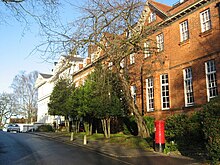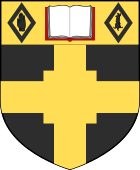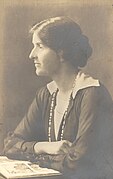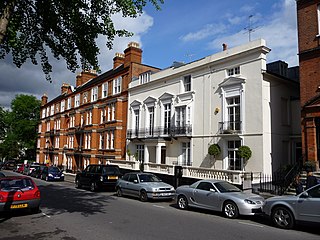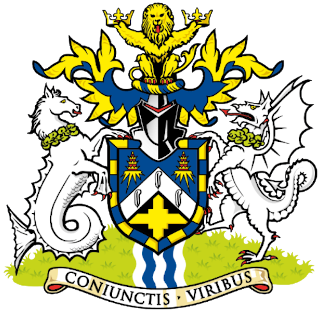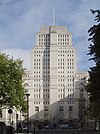Dudin Brown was the founding benefactress and council member from 1882 to 1917.
Twentieth century
1902: Westfield College admitted as a School of the University of London in the Arts.
1915: University of London recognised the Botanical Laboratory for Honours work, allowing Westfield students to sit for Honours BSc as Internal students.
1927: Chapman Wing was completed. [5] Decision taken to name individual college buildings. The Old Wing was renamed Maynard Wing, the New Wing was renamed Dudin Brown Wing, the new building was named Chapman Wing and the New Library was renamed Skeel Library.
1928: Westfield College confirmed as a School of the university. The Head of Westfield College was included among 9 Heads of Schools of the university to be members of the Senate.
1933: Grant of the Royal Charter, Incorporating the college.
1934: Coat of arms granted 15 February. [6]
1939-1940: Westfield College relocated to St Peter's Hall, University of Oxford after war broke out.
1941: Many of the college buildings, including Old House, requisitioned by the Admiralty for training the Women's Royal Navy Service.
1945: Westfield College returned to London.
1960: Westfield College formally acknowledged by the University of London as a School in the Faculty of Science.
1961: New Science Building completed. Westfield College began offering degrees in Botany, Zoology, Physics and Chemistry.
1969: Computer Services established, connected through a data link to the new central university computer.
1971: New Caroline Skeel Library was completed.
1971: First students admitted to study Computer Science at the new Department of Computer Science and Computer Unit.
1972: New purpose built Halls of Residence in Kidderpore Hall completed. The University of London's Murray Report published, expressing concerns about the smaller colleges, and placed in question the future of Westfield College as an independent institution.
1982: Decision made to transfer the Science Faculty to Queen Mary College.
1984: Most of the Science Faculty including Physics, Chemistry, Botany and Biochemistry and Zoology, and 68 members of staff transferred to Queen Mary College in Mile End. Computer Science teaching was transferred to Kings College.
In the mid-to-late 1980s, the University of London underwent considerable reorganisation, and many smaller colleges were merged. Consequently, Westfield was merged with Queen Mary College in 1989, forming Queen Mary and Westfield College. Most student accommodation, administrative offices and several academic departments continued to be based at the Hampstead campus until 1992, however, and the college retained its separate identity. The new, combined, college was finally located at Queen Mary's site in Mile End, East London from 1992 onwards. However, some departments moved to King's College London and many academic staff moved to other colleges, such as Royal Holloway College. [7]
A history of the college called Castle Adamant in Hampstead was published in 1983. [8]
